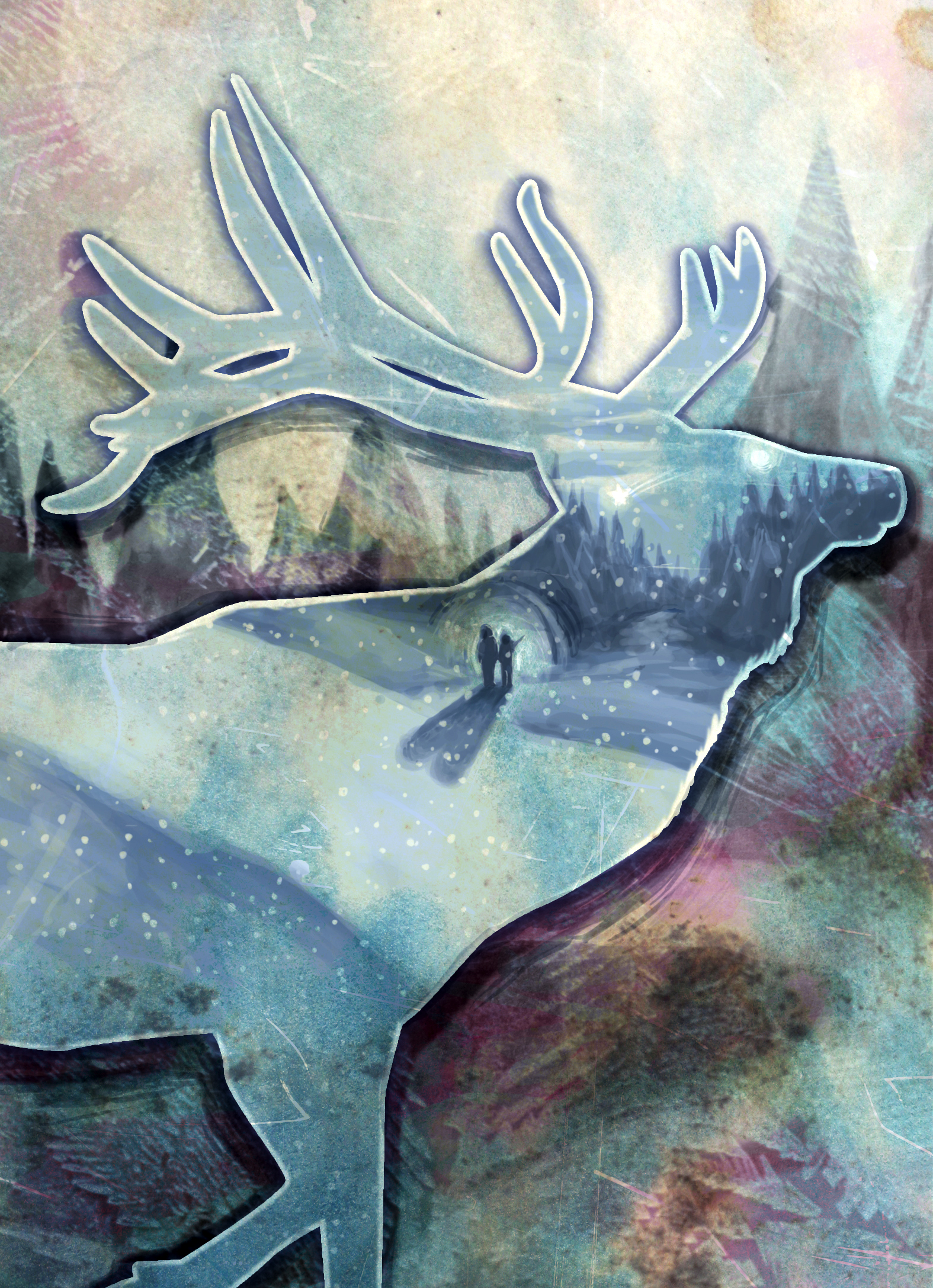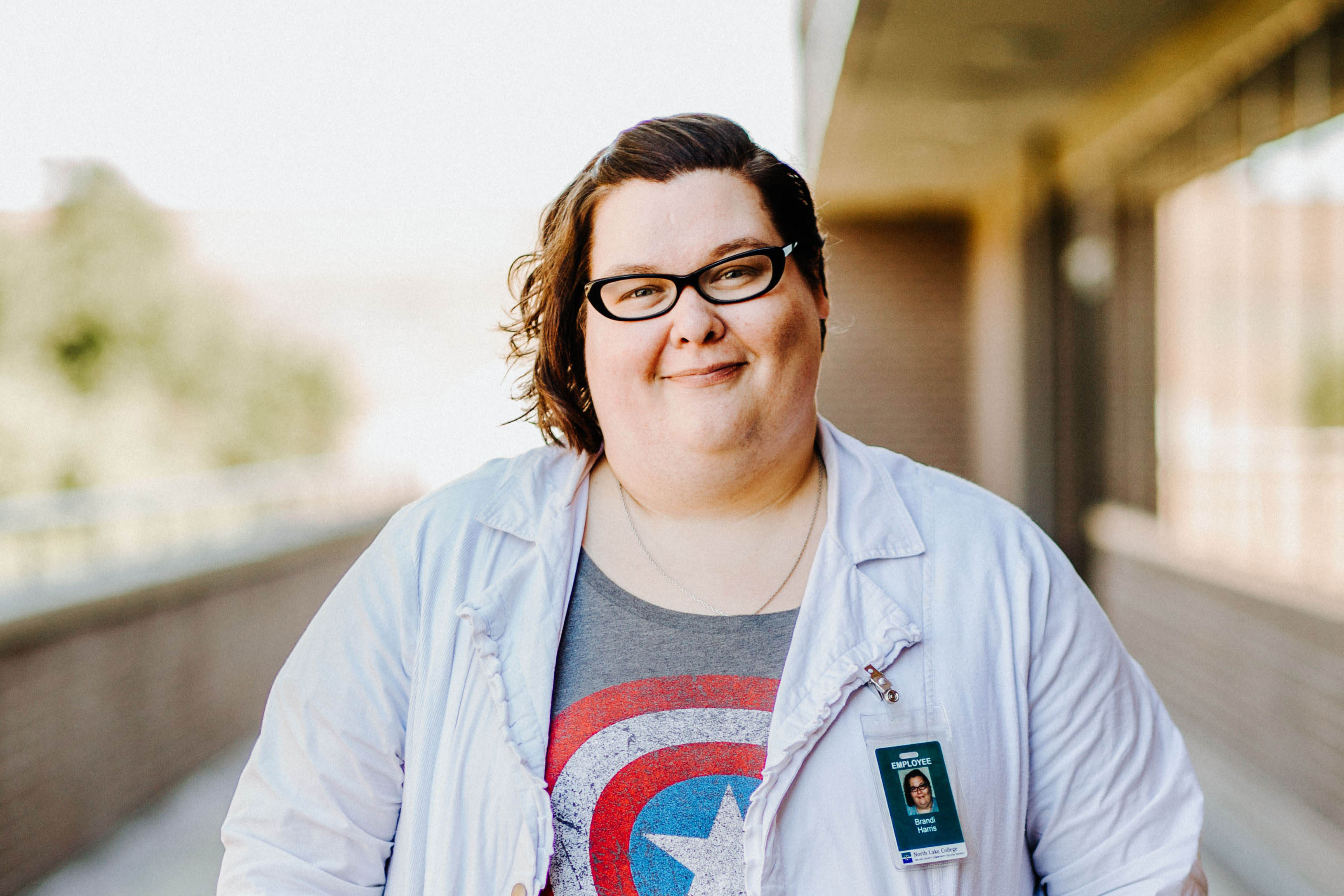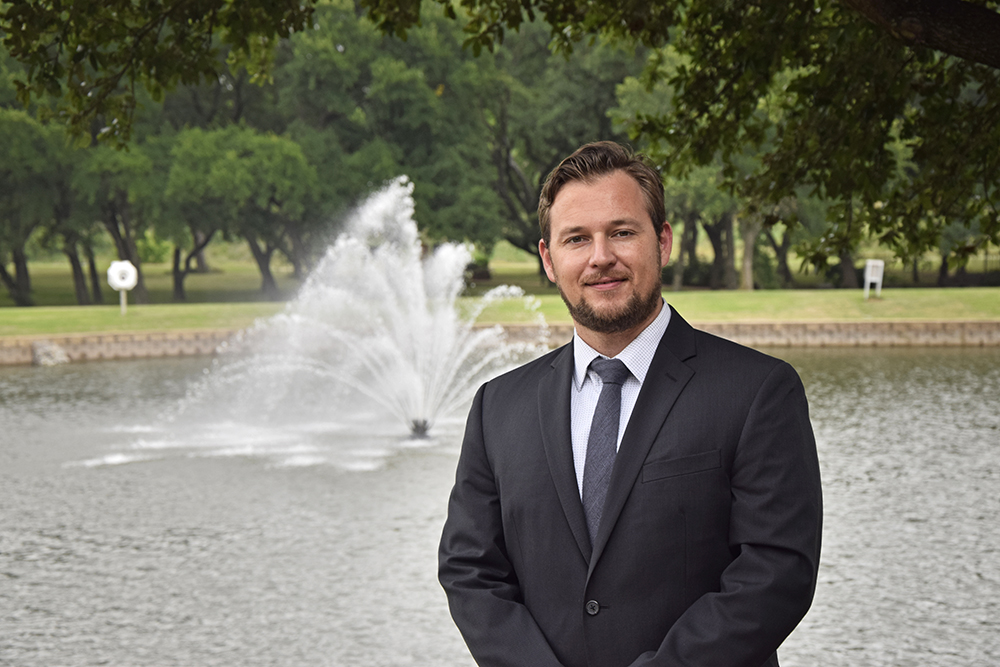North Lake College art professor Brett Dyer’s office is filled with art. Mona Lisa smiles down from a corner perch, original canvases cover the walls and on the floor sits a sculpture made from painted-over recycled materials, including a globe and a plastic water bottle.
Dyer’s life wasn’t always so artistic. He grew up in a family that didn’t care for art, and as a child he rarely encountered it. Now, though, Brett Dyer specializes in painting—and in teaching. As a professor, and as the 2015-16 NLC President’s Scholar, Dyer focuses his attention on students like his younger self, who are still discovering that they can express themselves through creativity.
Finding an identity
Dyer’s upbringing is a world apart from his career today. His childhood farm, outside the east Texas town of Hallsville, had “no cable, no internet. I think the nearest store was 45 minutes away.” The only art he ever saw hanging on a wall was at his doctor’s office.
“I didn’t even know people were still artists,” Dyer reflects. “I thought it was a thing people did a long time ago.” A high school art class helped Dyer discover what he’d been missing, and a field trip to the Dallas Museum of Art was a “big awakening” as Dyer began to carve out a new identity.
Dyer wanted to go to college, but his family was opposed. As he remembers it, “My parents told me, ‘College is for people that think they’re better than everybody else. You’re not goin’.’”
He applied anyway, but small scholarship offers left him “discouraged.” Dyer’s savings couldn’t finance a college education either: “I think I had a cow and what was in my bedroom.” Finally, his art teacher suggested he apply to a nearby community college which offered full scholarships for art students. Soon, against the odds, Brett Dyer was a college student.
Opening minds
Dyer found the community college environment, with its personalized attention and close connection between professors and students, to be just what he needed. After acquiring a Master of Fine Arts degree from a larger university, he knew he wanted to teach at a community college.
As Brett explains, “I like helping students who were like me. I had students this semester that this was the first art class they ever took. Seeing them so excited, seeing them find their own voice—that happened to me too.”
Remembering supportive mentors, like his first high school and college art teachers, Dyer aspires to give the same personal attention to his students. For example, he explains, “I like to be in the classroom at least 30 minutes early.” That way, he can write out instructions on the board and organize the materials students will use to create their works.
When he lectures, Dyer tries to open minds, not change them, and doesn’t impose his own beliefs. “I don’t want to tell my students what I like and what I don’t like.” Instead, he wants to help students find their own preferred styles.
Free expressions
Dyer’s own artwork includes encaustic painting, a medium that uses beeswax. These paintings are smaller, and the material is more fragile, but encaustic painting “felt innate” when Dyer first tried it. “I think the first time I played with it I made like eight paintings in one day.”
His paintings often come from interactions with friends, family, and strangers. “My work’s always about something emotional or personal,” he explains, which is why many of the paintings include silhouettes or abstract human figures. He avoids specific portraits because that way his subject “could be anybody.” Just like he proves that anybody can discover that they’re destined to be an artist.








Beautiful story, Beautiful mission Brett. So proud to see your accomplishments and to see you so happy!
Thank you, Liz!
Brett, your personal story
will give strength to another facing what seems as insurmountable obstacles, to allow a hidden or known passion to come to fruition. Love you, your story, and your work.
Thank you so much, Diane! ❤️❤️
Brett,
Thanks for sharing your story! So glad you persisted and pursued your passion!
Brett this article brought tears to my eyes…..I think this, besides your art is what has pulled me to you! I was not exposed to art until Louis and I met….my eyes and heart were opened and came ALIVE! We enjoy exploring different places for pieces that pull to us….yours is one of them. Exceptional article on an exceptional, caring, talented young man.
Thank you, Tammy! <3